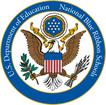Acceptable Use Policy
Computers are another tool used to support learning and to heighten instruction. Computer networks allow people to interact with computers within the school and with other computers around the world. With the popularity of the Internet growing each day, it is imperative that parents, staff, and students understand that an Acceptable Use Policy is necessary to ensure that our computers and the network be used in a responsible, ethical, and legal manner.
Thornhill Elementary will abide by the mission, policy, and guidelines of the Oakland Unified School District Network (OUSD-NET).
Acceptable use includes:
Failure to adhere to Thornhill’s Acceptable Use Policy will result in the user’s access being revoked by the local school administrator and/or the OUSD-NET Network Administrator.
Unacceptable use includes:
Parents and users (including staff and students) should understand that steps are taken (by the use of OUSD recommended proxy servers) to mitigate the connection to or the downloading of offensive material. However, due to the dynamic nature of the Internet, there is no fail-safe way to insure that students or staff are completely isolated from controversial, offensive or questionable content, i.e. Thornhill and OUSD are not responsible for the information on remote systems. Furthermore, it is understood that users will change passwords periodically and are responsible for logging off local and remote systems when they are not present. It is understood that system administration personnel will have access to all files, including e-mail, at all times.
Thornhill Elementary will abide by the mission, policy, and guidelines of the Oakland Unified School District Network (OUSD-NET).
Acceptable use includes:
- Using computer or network equipment for classroom activities or projects, this includes connecting to other systems and computers through the Internet
- Sending and receiving e-mail related to school activities
Failure to adhere to Thornhill’s Acceptable Use Policy will result in the user’s access being revoked by the local school administrator and/or the OUSD-NET Network Administrator.
Unacceptable use includes:
- Using profanity, obscenity, or language which may be considered offensive or abusive to another user
- Violating copyright laws which include copying commercial software and copying/printing material that is considered restricted or proprietary
- Giving out individual passwords or using another individual’s password
- Reading, copying, or modifying another users e-mail or restricted files without prior consent
- Loading or modifying software without consent of a staff member or local school administrator
- Knowingly sabotaging computer or network equipment, this includes disabling certain operating system functions or network configurations
- Using the computers or network for any type of illegal activity or personal gain
- Students may not use computers or the network without permission from a staff member
Parents and users (including staff and students) should understand that steps are taken (by the use of OUSD recommended proxy servers) to mitigate the connection to or the downloading of offensive material. However, due to the dynamic nature of the Internet, there is no fail-safe way to insure that students or staff are completely isolated from controversial, offensive or questionable content, i.e. Thornhill and OUSD are not responsible for the information on remote systems. Furthermore, it is understood that users will change passwords periodically and are responsible for logging off local and remote systems when they are not present. It is understood that system administration personnel will have access to all files, including e-mail, at all times.
Internet Privacy Protections and Considerations for Students
Thornhill Elementary School has an obligation to protect student safety and to balance this with the need for open communications when using the Internet. There are documented instances of students being inappropriately identified via the Internet and thereby becoming subjected to unhealthy situations or unwelcomed communications.
The purposes of these guidelines are:
It is clear that there are significant risks, as well as significant advantages, involved with allowing students to be identified on the Internet. Therefore students should not be easily identifiable from materials they might publish on the Internet. No directory information should be posted on the web for students whose parents have returned the form asking that such information not be released.
Guidelines:
By signing the Consent and Waiver form, parents and users (including staff and students) agree to abide by these guidelines as well as those of OUSD-NET. The student and his/her parent(s) or guardian(s) should discuss these rights and responsibilities together.
The purposes of these guidelines are:
- To inform school staff of the possible dangers of allowing students to publish identifying information on the Internet;
- To recognize that there are potential advantages of allowing students to publish identifying information on the Internet; and
- To provide our school a recommended set of Guidelines governing how student identifying information should be allowed in publishing on the Internet.
It is clear that there are significant risks, as well as significant advantages, involved with allowing students to be identified on the Internet. Therefore students should not be easily identifiable from materials they might publish on the Internet. No directory information should be posted on the web for students whose parents have returned the form asking that such information not be released.
Guidelines:
- Only first names be used in published student work
- Pictures that are a part of student publishing should not include identifying information
- Under no circumstances should a student’s home address or phone number be included.
- If replies to published student work are appropriate, the sponsoring teacher’s address should be the e-mail address displayed.
- In special circumstances with parent-signed release, identifying information can be added.
By signing the Consent and Waiver form, parents and users (including staff and students) agree to abide by these guidelines as well as those of OUSD-NET. The student and his/her parent(s) or guardian(s) should discuss these rights and responsibilities together.
